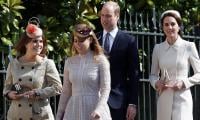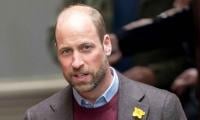Punjab schools data remains elusive
LAHOREDespite the much-trumpeted slogan of being an open-government, the province’s School Education Department is either concealing data or shy of sharing the same for the reasons best known to those at the helm.It is revealed when one tries to get hold of information/ data by visiting the department’s official website
By our correspondents
August 21, 2015
LAHORE
Despite the much-trumpeted slogan of being an open-government, the province’s School Education Department is either concealing data or shy of sharing the same for the reasons best known to those at the helm.
It is revealed when one tries to get hold of information/ data by visiting the department’s official website or the offices situated in old P&D (Planning and Development) building.
It is indeed a tough row to hoe, if one wants to have data which could give a clear picture of the present state of affairs vis-à-vis public school education in Punjab and subsequently the policy intervention.
The data, which should be publicly available, is being “concealed” while only frivolous kind of information is offered on the website of School Education Department and the recently-launched open portal powered by Punjab Information and Technology Board (PITB) which has a tagline “Free, open and real-time”.
On top of it, the department is also reluctant to share the data on right to information (RTI) requests under the Punjab Transparency and Right to Information Act 2013. This correspondent had filed an RTI request to the department about the number of public schools adopted by NGOs/private organisations or trusts on February 02, 2015 and unfortunately “wait” is the only response received so far. And even when the department “honours” one’s RTI request, the information provided is not up-to-date.
An RTI request seeking information about single-teacher schools was filed by this correspondent on August 03, 2015. The response was amazingly instant on part of the department, according to which there were 5,046 such schools across the province. However, the public information officer (PIO) informed verbally that the information provided to this scribe was based on data till October 2014! He added that the situation had “improved” in the meantime.
The Programme Management and Implementation Unit (PMIU) of Punjab Education Sector Reform Programme (PESRP) went a step ahead and on a telephonic query informed this correspondent that there was not a single such school currently in Punjab as all the schools, which were earlier with a single teacher, had got teachers.
One wonders as to why the department shared out-of-date information on a fresh request. It also perplexes one as to what the department would do if our education-friendly chief minister requires such information.
The latest episode, which boggled the imagination of this scribe, was the response of the department to his pursuit for getting information related to the enrolment achievement under Phase-I of Universal Primary Education (UPE) Campaign 2015 which is part of chief minister’s “Parho Punjab Barho Punjab” initiative.
According to the data available on the department’s website (now removed), the department had succeeded in enrolling 2.3 million children (4-9 years of age group) against the target of 4.4 million children. However, when efforts were made to verify the same, Special Secretary (Schools) Ahmed Ali Kamboh claimed that the enrolment achievement rate was much higher (over 90 per cent) and the same was vetted by a third party validation by Nielsen through the Department for International Development (DFID), UK.
When asked if the Nielsen report could be shared with this correspondent, he said the same was not even shared with the department and only its findings were communicated which almost matched the enrolment achievement of the Schools Department.
Kamboh was kind enough to direct Director Monitoring Rana Abdul Qayyum Khan to provide information about first phase of the UPE Campaign 2015 according to which 3.8 million children have so far been enrolled in public and private schools and religious seminaries across the province against the target of 4.4 million children (of 4-9 years of age group).
If believed, this information is indeed a success story on the part of the department and the Punjab government and must be celebrated since the campaign is supposed to continue till October 31 and a major chunk of the target has been achieved. —Khalid Khattak
Despite the much-trumpeted slogan of being an open-government, the province’s School Education Department is either concealing data or shy of sharing the same for the reasons best known to those at the helm.
It is revealed when one tries to get hold of information/ data by visiting the department’s official website or the offices situated in old P&D (Planning and Development) building.
It is indeed a tough row to hoe, if one wants to have data which could give a clear picture of the present state of affairs vis-à-vis public school education in Punjab and subsequently the policy intervention.
The data, which should be publicly available, is being “concealed” while only frivolous kind of information is offered on the website of School Education Department and the recently-launched open portal powered by Punjab Information and Technology Board (PITB) which has a tagline “Free, open and real-time”.
On top of it, the department is also reluctant to share the data on right to information (RTI) requests under the Punjab Transparency and Right to Information Act 2013. This correspondent had filed an RTI request to the department about the number of public schools adopted by NGOs/private organisations or trusts on February 02, 2015 and unfortunately “wait” is the only response received so far. And even when the department “honours” one’s RTI request, the information provided is not up-to-date.
An RTI request seeking information about single-teacher schools was filed by this correspondent on August 03, 2015. The response was amazingly instant on part of the department, according to which there were 5,046 such schools across the province. However, the public information officer (PIO) informed verbally that the information provided to this scribe was based on data till October 2014! He added that the situation had “improved” in the meantime.
The Programme Management and Implementation Unit (PMIU) of Punjab Education Sector Reform Programme (PESRP) went a step ahead and on a telephonic query informed this correspondent that there was not a single such school currently in Punjab as all the schools, which were earlier with a single teacher, had got teachers.
One wonders as to why the department shared out-of-date information on a fresh request. It also perplexes one as to what the department would do if our education-friendly chief minister requires such information.
The latest episode, which boggled the imagination of this scribe, was the response of the department to his pursuit for getting information related to the enrolment achievement under Phase-I of Universal Primary Education (UPE) Campaign 2015 which is part of chief minister’s “Parho Punjab Barho Punjab” initiative.
According to the data available on the department’s website (now removed), the department had succeeded in enrolling 2.3 million children (4-9 years of age group) against the target of 4.4 million children. However, when efforts were made to verify the same, Special Secretary (Schools) Ahmed Ali Kamboh claimed that the enrolment achievement rate was much higher (over 90 per cent) and the same was vetted by a third party validation by Nielsen through the Department for International Development (DFID), UK.
When asked if the Nielsen report could be shared with this correspondent, he said the same was not even shared with the department and only its findings were communicated which almost matched the enrolment achievement of the Schools Department.
Kamboh was kind enough to direct Director Monitoring Rana Abdul Qayyum Khan to provide information about first phase of the UPE Campaign 2015 according to which 3.8 million children have so far been enrolled in public and private schools and religious seminaries across the province against the target of 4.4 million children (of 4-9 years of age group).
If believed, this information is indeed a success story on the part of the department and the Punjab government and must be celebrated since the campaign is supposed to continue till October 31 and a major chunk of the target has been achieved. —Khalid Khattak
-
 World's Biggest Fish Market Is Set To Open In Sydney: First Look Revealed
World's Biggest Fish Market Is Set To Open In Sydney: First Look Revealed -
 Ariana Grande, Jonathan Bailey Reuniting For THIS Project
Ariana Grande, Jonathan Bailey Reuniting For THIS Project -
 Sydney Sweeney Saved Herself From Brutal Roast: Here's How
Sydney Sweeney Saved Herself From Brutal Roast: Here's How -
 Prince Harry’s ‘unrealistic’ Hopes Get Dashed: ‘Sincerity For King Charles Is Under Question’
Prince Harry’s ‘unrealistic’ Hopes Get Dashed: ‘Sincerity For King Charles Is Under Question’ -
 Meghan Markle's New Product Sells Out Within Minutes
Meghan Markle's New Product Sells Out Within Minutes -
 Revealed: Who Leonardo DiCaprio Was Talking To In Viral Golden Globe Video
Revealed: Who Leonardo DiCaprio Was Talking To In Viral Golden Globe Video -
 Prince William Represents King Charles At Windsor Castle Ceremony
Prince William Represents King Charles At Windsor Castle Ceremony -
 'Hotel Transylvania 5' Gets Major Update By Film's Star
'Hotel Transylvania 5' Gets Major Update By Film's Star -
 PlayStation Plus Adds Over 300 Hours Of Gameplay Across Massive New Titles
PlayStation Plus Adds Over 300 Hours Of Gameplay Across Massive New Titles -
 Mandy Moore On Mom Friendships Amid Ashley Tisdale's Mom Group Claims
Mandy Moore On Mom Friendships Amid Ashley Tisdale's Mom Group Claims -
 Justin Baldoni Objects To Removing Taylor Swift's Name From Case
Justin Baldoni Objects To Removing Taylor Swift's Name From Case -
 Princess Eugenie, Beatrice Warned About Royal Titles After They Turn Down Prince William's Request
Princess Eugenie, Beatrice Warned About Royal Titles After They Turn Down Prince William's Request -
 Samsung One UI 8.5 Adds Fully Customisable Unlock Animations
Samsung One UI 8.5 Adds Fully Customisable Unlock Animations -
 Injured By Bullets, New York Father-son Duo Beat Alleged Gunman With A Bat
Injured By Bullets, New York Father-son Duo Beat Alleged Gunman With A Bat -
 Annular Solar Eclipse 2026: Here's Everything To Know About The ‘ring Of Fire’
Annular Solar Eclipse 2026: Here's Everything To Know About The ‘ring Of Fire’ -
 Blake Lively Gives Up Hopes Of Taylor Swift Reconciliation?
Blake Lively Gives Up Hopes Of Taylor Swift Reconciliation?



